A new lease on rail life
Increased passengers on the rail network every year means an increase in the number of tonnes per year on the rails.
In order to overcome this challenge railways are reorganizing themselves to provide a reliable railway with no downtime. Due to the steadily growing frequency of the trains around the world, rail maintenance has become a much bigger challenge.
One of the greatest threats to networks are head checks (rail cracks) which can dramatically increase the risk of rail failure and reduce the lifetime of the rail.
Rail milling technology
Due to the recently introduced eddy-current head check detection and measurement devices which are now available in the market, cracks in the rail can be easily measured and evaluated with smart IT programs.
Studies of the rails on cross country railways and metro systems have shown that severe rail head checks have been found hiding undetected below the railhead surface. Head checks with a crack depth of over 5mm are not uncommon, and can be spread all over the network. In particular these occur in areas of high annual axle tonnage, high acceleration and braking.
These head checks have previously been an underestimated major threat to rail life and track safety. In response to this threat questions were raised, as to how the threat to the network could be reduced or eliminated whilst the life of the rail in track could be prolonged or extended.
Depending on the remaining height of the railhead, after proposed treatment the head checks and other defects can be completely removed from the rail with the Linsinger rail milling technology and as a consequence considerable rerailing costs can be saved and rail life extended.
The cutting depth of the rail milling machine can be individually set from 0.3mm up to 5mm in order to remove all defect material and cracks in only one working pass without changing the metallurgical state of the rail.
Japan
Linsinger was the first company to produce mobile rail milling machines worldwide, early in the 1990s. In 2011 the company delivered the first electrically isolated milling train to Japan. The train was designed to have a small clearance diagram and a low axle load making it perfect for operation in tight spaces like those found in metros and on narrow gauge railways.
Over 22,000 kilometres of railway in Japan, which constitutes the vast majority, is narrow gauge including the 200 kilometres of the Tokyo metro.
Korea
In 2011 Korea purchased the world’s largest carbide tip circular sawing machine.
The combination of LINCUT® and DPD® gearbox technology allows the cut of steel billets up to 800mm diameter with uniquely low production costs and unsurpassed output capacity.
Linsinger rail milling machines are able to treat both plain line and also to maintain and switches and crossings.
Various measuring systems can be fitted to the machine including longitudinal and transverse profile measuring systems as well as eddy-current crack detection systems to determine any defects remaining after treatment. All these individual production steps are carried out in a single pass only.
New and old
Milling machine operations in Asia in places like China, Hong Kong, Thailand, Korea and Japan have thrown up new types of issues as some of these countries have ageing networks that are being replaced and repaired at the same time.
Equally many of these countries have rapidly expanding cities and so are in the process of building new metro systems with an eye on future maintenance.
Comparing Hong Kong, Singapore and Thailand’s capital Bangkok, each of these places have Metro networks at various stages of maturity, some with very high wear rates.
Wear rates can be as high as 0.5mm per year on the metro rails in Hong Kong and Japan as both these networks are extremely busy. Major metropolises like Bangkok and the megacities in China can also expect to see an increase in passenger frequency as they expand their networks.
Saving Time
Due to the structure clearance (including axle load limits of the vehicles) constraints other rail re-profiling machines struggle to keep the rail profile in shape due to the material removal per pass these rail maintenance technologies can deliver.
These rail re-profiling machines would need multiple passes in highly frequented areas to restore the rail profile whereby a metro rail milling machine is able to remove up to 1.5mm in only one working pass.
That means a rail milling machine is more efficient and much faster than other conventional rail re-profiling machines available on the market especially when it comes to corrective maintenance.
Looking to the future
The most important story for Asia Pacific over the coming years will be the cross country high-speed railways that we can expect to see popping up in places like Indonesia and Thailand. The pieces are also already in place for major intercountry railways such as the Kuala Lumpur to Singapore and the Kunming to Vientiane high-speed railways.
Cross country railways can use bigger and heavier rail maintenance equipment to reshape the rail profile but still need several passes in the event of corrective maintenance.
With a MG31 rail milling machine for instance you are able to remove up to 5mm in one working pass only. With the rail milling technology you are able to remove deep defects from the rail head and therefore prolong the rail life with lower costs compared to conventional rail maintenance technologies.


